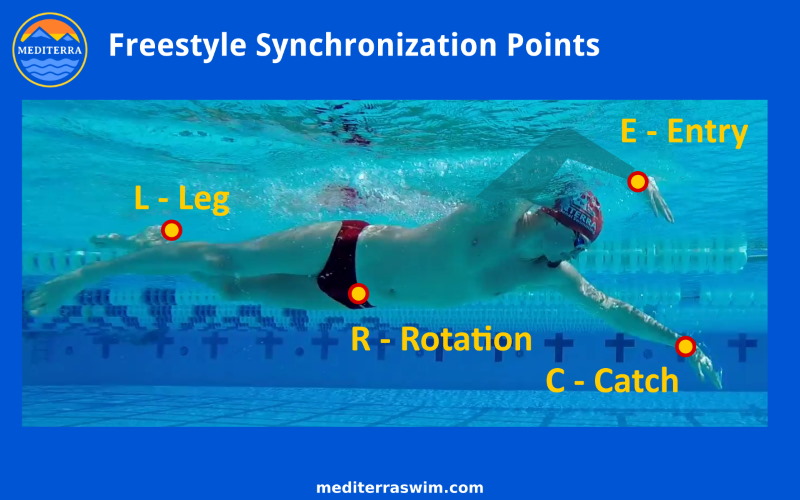How Can We Help?
Intro to Synchronization
You’ve worked on building each section of the stroke – the entry, the body rotation, the catch, and the leg press – section by section. They are intended to work together as a harmonious whole, not separately. Eventually, you need to practice connecting these parts and then refining those connections to create a smooth and powerful whole-body propulsive movement.
Why Synchronize?
When these parts are connected and timed well, they do not merely add up, the magnify the power you can utilize in each stroke. When the propulsive movements of the body are coordinated in this way, they provide a thrilling sense of acceleration on each stroke!
When these parts of the stroke are not connected well, it causes what we call ‘power leaks’ in your propulsion. You may be harvesting free force from gravity, you may be generating momentum with the recovery swing and the torso rotation, you may be anchoring your catch hand, but if all these parts are not connected together and timed well, a great portion of the force generated in one part of the body cannot be transferred to another where it would be used – it is burned up as friction or stress inside the body and wasted in moving water around rather than moving your body forward.
Synchronization practice will help tie each piece of the movement together, and plug those power leaks.
Full Time Sync Work Ahead
Synchronization practice is something that may likely occupy most of your training attention in your advanced stages of development. When there is any change in speed, intensity or in the conditions of your swim, there will likely be a need to adjust and refine your synchronizations to fit those precise conditions. There is only a perfect synchronization arrangement for this moment right now. When the conditions change you may feel a need to make fine adjustments to the synchronization to feel smoother and more efficient in that unique set of conditions. That is why it becomes a frequent focus in one’s advanced training. It is infinitely improvable and it is always rewarding to make synchronization a little better so it becomes a perpetual source of interest and pleasure.
Four Propulsive Parts
We divide the body into four main propulsive parts and work on synchronizing all four of them together to create this one smooth, harmonious whole propulsive movement on each stroke.
- E – Entry and Extension
- C – Catch
- R – Rotation
- L – Leg Press
However, it is hard for the brain to focus on all four of those at once. Instead, we work on synchronizing just two of those parts at a time, and work around through each combination over and over again, gradually bringing all of them into better harmony without having to focus on all four together at the start.

Sync Combinations you will practice:
- ER
- CR
- EC
- LR
- LC
- LE
Later on, as the nervous system grows familiar and the synchronization of each combination becomes more autonomous in the brain’s control, you’ll find you can zoom out and hold in attention more parts at one time, like ERC, LRC, and LRE.
